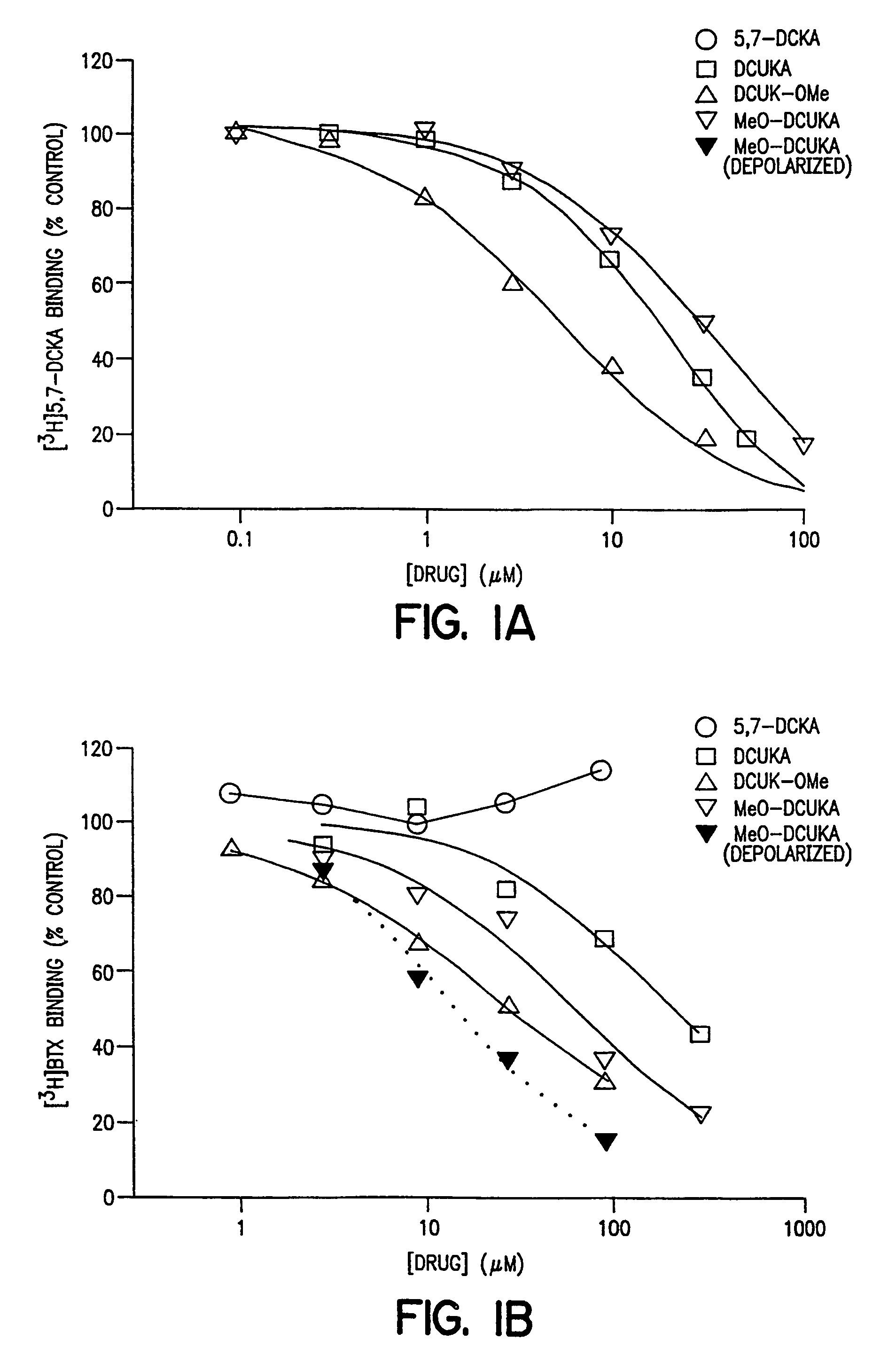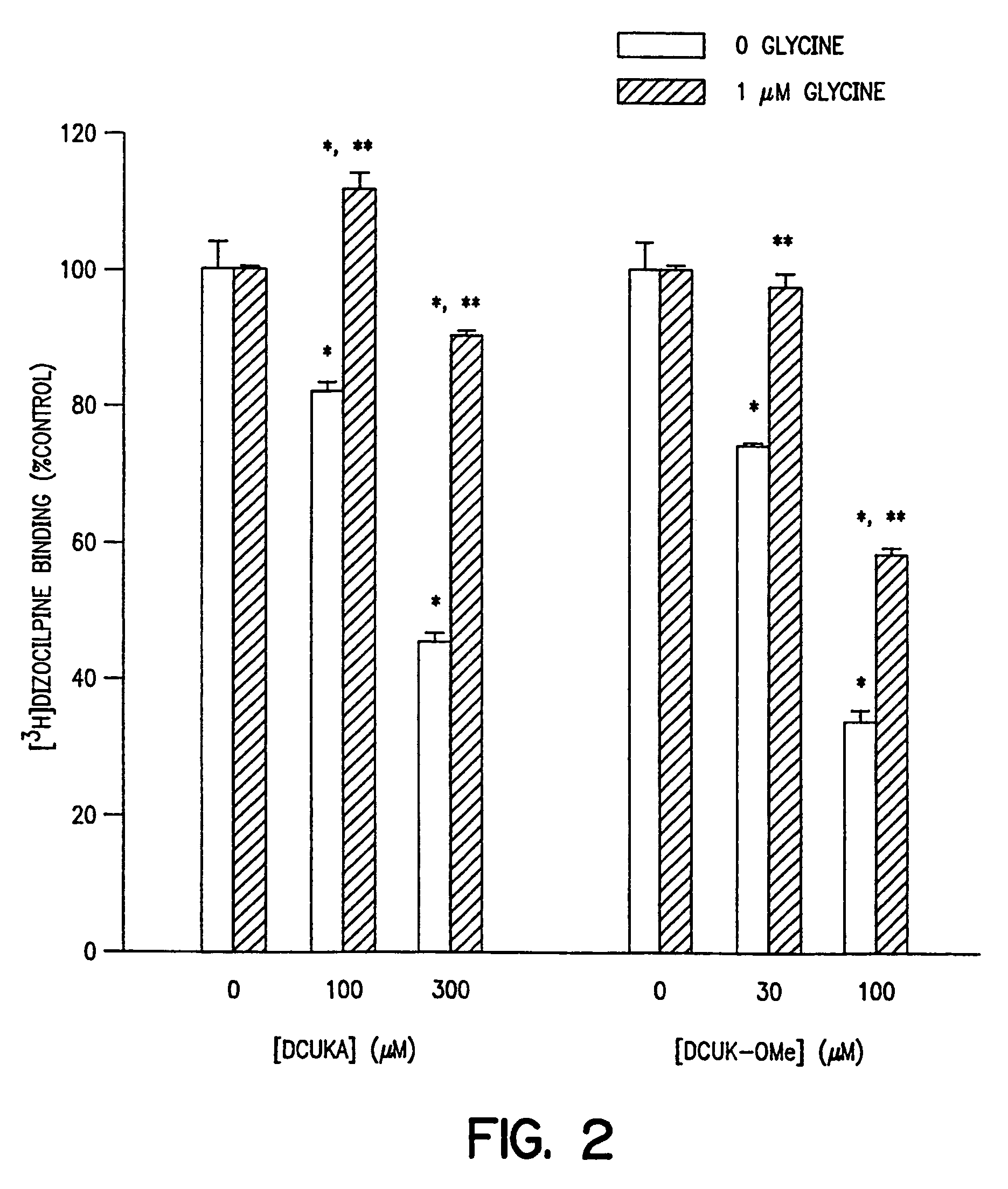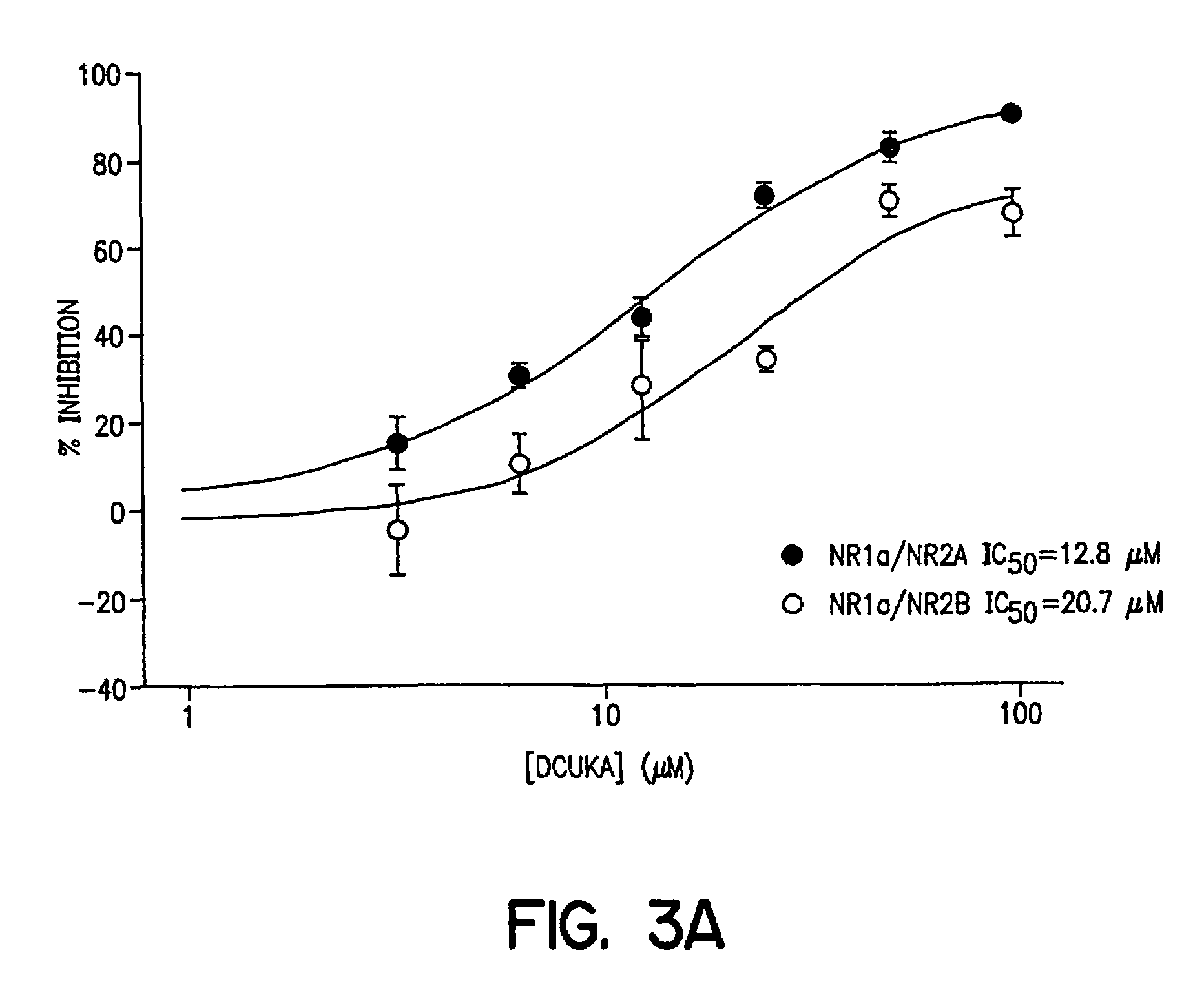Compounds, compositions and method suitable for amelioration of withdrawal syndromes and withdrawal-induced brain damage
- Summary
- Abstract
- Description
- Claims
- Application Information
AI Technical Summary
Benefits of technology
Problems solved by technology
Method used
Image
Examples
example 1
Effect of DCUK Compounds on the Binding of [3H]5,7-DCKA to Rat Brain Cortical Membranes and [3H]BTX Binding to Rat Brain Cortical Synaptosomes
[0075]This example compares the effect of DCUK compounds on the binding of ligands defining the strychnine-insensitive glycine binding site on the NMDA receptor, and batrachotoxin binding to a site on voltage-sensitive sodium channels, to effects of the DCUK compounds on binding of ligands defining other binding sites and receptors in rat brain cortical preparations.
[0076]Male Sprague-Dawley rats were killed, their brains removed, and their cerebral cortices dissected and binding of [3H]5,7-dichlorokynurenate ([3H]5,7-DCKA) assayed. [3H]5,7-DCKA binding assays were performed in crude synaptic membranes prepared by a modification of the method of Jones, et al., J. Pharmacol. Methods, 21 161–168 (1989) the relevant disclosures of which are incorporated herein by reference. The pelleted “buffy coat”fraction was obtained by centrifugation and froz...
example 2
Effect of DCUK Compounds on the Binding of [3H]dizocilpine to Rat Cortical Membranes
[0095]In a further study, [3H]dizocilpine binding was assayed in rat cortical membranes prepared as described for [3H]5,7-DCKA binding in Example 1. [3H]Dizocilpine (MK-801) binding assays were performed in a volume of 1 ml containing 100–150 μg of tissue, 5 nM [3H]dizocilpine, 10 μM L-glutamate, 30 μM MgSO4, and 100 or 300 μM DCUKA or 30 or 100 μM DCUK-OMe, in 10 mM HEPES-KOH buffer (pH 7.4 at 23° C.). Incubations were for 30 minutes at room temperature. The reaction mixtures were filtered over GF / B filters presoaked in 0.1% polyethyleneimine. Bound radioactivity was quantitated by liquid scintillation spectroscopy. Non-specific binding was defined with 20 μM dizocilpine. Under these conditions, [3H]dizocilpine binding can be used as a measure of the activation of the NMDA receptor ion channel by glycine. See, for example, Wong, E. H. F., et al.,“ GLYCINE MODULATES [3H]MK-801BINDING TO THE NMDA RECE...
example 3
Effects of DCUKA on NMDA-induced Currents Obtained from Oocytes Expressing Recombinant NMDA Receptors
[0097]Oocytes were obtained from Xenopus laevis frogs (Nasco or Xenopus I) kept in aquarium tanks at 19–21° C., on a 12 hr light / dark cycle. Mature females were anesthetized by immersion for approximately 30 min in a 0.12% 3-aminobenzoic acid ethyl ester solution, a small incision was made in the abdominal wall and a piece of ovary was removed and placed in Modified Barth's solution (MBS; in mM) containing 88 NaCl, 1 KCl, 10 HEPES, 0.82 MgSO4, 2.4 NaHCO3, 0.91 CaCl2, 0.33 Ca(NO3)2 (pH 7.5). To facilitate manual dissection of oocytes, a section of ovary was transferred from MBS to a hypertonic buffer containing 108 mM NaCl, 2 mM KCl, 2 mM EDTA, 10 mM HEPES, pH 7.5 and theca and epithelial layers of mature oocytes (stages V and VI) were removed with surgical forceps. The follicular layer was removed by a 10 min immersion in 0.5 mg / ml of collagenase in buffer containing 83 mM NaCl, 2 mM...
PUM
 Login to View More
Login to View More Abstract
Description
Claims
Application Information
 Login to View More
Login to View More - R&D
- Intellectual Property
- Life Sciences
- Materials
- Tech Scout
- Unparalleled Data Quality
- Higher Quality Content
- 60% Fewer Hallucinations
Browse by: Latest US Patents, China's latest patents, Technical Efficacy Thesaurus, Application Domain, Technology Topic, Popular Technical Reports.
© 2025 PatSnap. All rights reserved.Legal|Privacy policy|Modern Slavery Act Transparency Statement|Sitemap|About US| Contact US: help@patsnap.com



